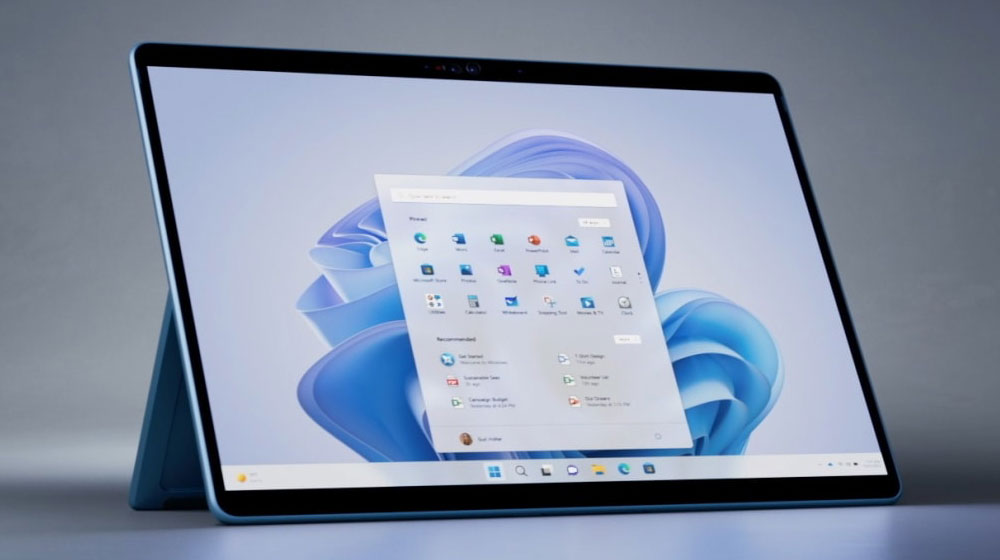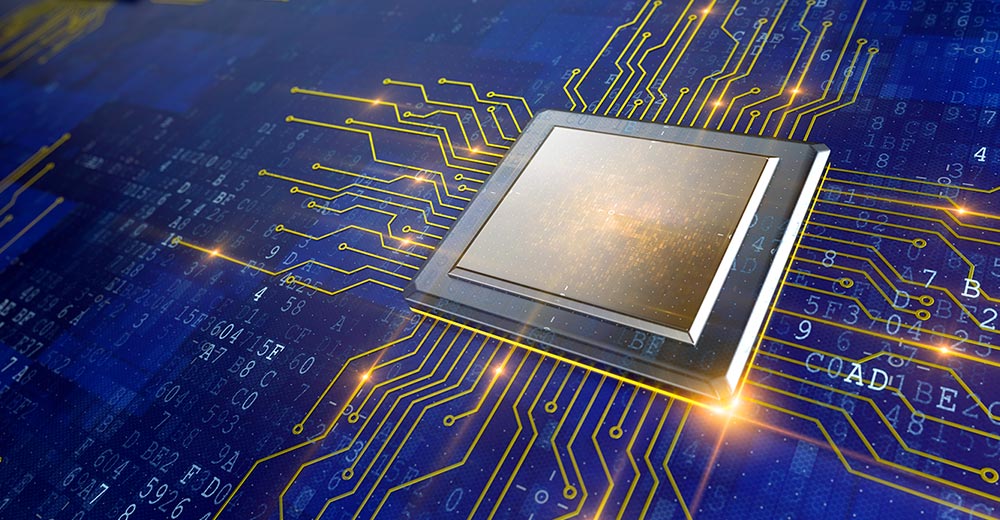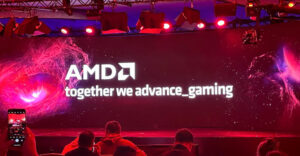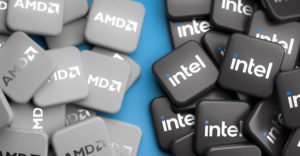Thanks largely to Nvidia, GPUs have nearly eclipsed CPUs as the technology driving advancement. When it comes to AI, particularly on the training side, GPUs reign supreme. Generally, GPUs make our games and most advanced photo and video editing tools work better as well — and with social media, many folks are becoming creation experts.
But while AMD, Nvidia, and, most recently, Intel have played in this highly competitive space, all three have come to market lately with distinctive strategies, each with unique benefits, risks, and opportunities. As we recover from our Thanksgiving food comas here in the U.S., let’s explore these strategies.
We’ll then close with my product of the week: the new Arm-based Surface Pro 9 from Microsoft that may point to the near-term future of PC advancement.
Marketing Strategies: Apple Example
My first degree was in merchandising, which has to do with branding, shelving, product placement, and product strategy. As a result, I’m a bit fascinated by how different companies approach the PC market.
For instance, Apple is old-school, vertically integrated, and uses lock-in to mine its base for money. This tactic results in massive profits, but the company is no longer able to lead the market with innovation. Granted, public companies are measured by profits, not innovation, and if you had to choose one over the other as a CEO who wanted to keep your job, profits would be your focus as well.
The other PC companies, except for Microsoft Surface, are more eclectic, have high interoperability, no lock-in, and enjoy far greater innovation but suffer lower customer loyalty and smaller margins. But they are also less likely to catastrophically fail because they aren’t mining their customers for money.
IBM’s near collapse in the early 1990s was mainly due to a similar strategy to Apple’s. It occurred because customers typically don’t like funding excessive profits or being mined for money. Eventually, the company using this approach goes too far, and its customers abandon the platform. That’s what almost happened to IBM and caused it to scrap with prejudice the strategy Apple still uses.
For now, the strategy still works for Apple. However, it likely wouldn’t work for Dell, HP, or Lenovo, because none of those companies individually could do the Microsoft part of the solution and because their enterprise buyers are aware of the strategy Apple is using and generally attempt to avoid it like the plague — because it reduces buyer power and corporations like buyer power a lot.
Having said that, while Apple’s marketing efforts have significantly declined since Steve Jobs’ departure both in magnitude and execution, Apple still leads the PC market in marketing, showcasing how far ahead it once was under Jobs, even though the company was far less profitable back then.
Marketing goes to the core of the GPU strategies we will be discussing.
Nvidia
Nvidia is arguably the segment leader and showcases this with the deepest line, and it’s the only one of the three with a halo product. This is interesting because AMD’s Threadripper on the CPU side spun that market on its ear and allowed AMD to move aggressively on Intel’s workstation opportunity. It took over key leadership positions for AMD and Lenovo, using the part to gain segment dominance.
On the GPU side, the closest thing to AMD’s Threadripper is Nvidia’s 4090 RTX card, which is a beast. It has more performance than most need and pulls so much power it has been melting power connectors and forcing power supply upgrades to run the part. But, in terms of raw performance, nothing can touch it now in its segment.
A halo strategy uses an expensive showcase product to draw people to the brand and, if done correctly, can drive increased sales to the more affordable products that will sell in higher volumes. In the automobile market, this is like having a Mercedes-Maybach or supercar (Ford used the Ford GT most recently for this) to drive people into dealerships.
Since there is no such thing as an Nvidia store, the traffic aspect of the 4090 RTX is untested and unused. However, it still gives Nvidia performance bragging rights and solidifies its perceived market leadership even though most buyers will buy more affordable and less power-hungry alternatives.
AMD
As noted, it’s interesting that, given AMD’s success with Threadripper, it hasn’t come up with a similar strategy given the killer workstation or gaming rig would have a Threadripper CPU and a Threadripper-like GPU. For now, it is that Nvidia 4090 RTX card.
Instead, AMD has brought out two cards in the performance sweet spot. In contrast to what Ford did with the Ford GT, this is more like what GM did with the Corvette, particularly the new C8. It provides most performance benefits that the Ford GT provides in a far more useful and affordable fashion, allowing the Corvette to massively outperform the Ford GT in volume while costing a fraction of what Ford costs.
The idea of the performance you need at a price you can afford does resonate with buyers and doesn’t create some of the image problems that a halo product can cause, such as exorbitant cost and excessive power use, which can result in negative coverage on sustainability.
Buyers do like values, and while you don’t get the same performance bragging rights or visibility as you would with a halo product, you also don’t have issues with a part that is pushing performance limitations which can result in problems like the melting connectors (which Nvidia reports are still low numbers and may be the result of assembly errors).
Intel
Intel is new to this market and has two big problems. The first is that people know and trust the GPU parts from AMD and Nvidia, and the second is that those two companies are chasing each other so hard it is nearly impossible for another firm to catch them from behind. Intel needs to carve out part of the market and doesn’t have the performance for the top end, but it can deliver on features.
The approach is close to how Honda entered the car market by creating an affordable part that provided features beyond its price class and headed for where the real volume is, particularly during a tightening financial market where consumers are watching their pennies.
Right now, folks are becoming very thrifty, and Intel is playing hard for that frugal buyer who only has a budget for an entry-level part. Intel’s cards aren’t performance competitive with Nvidia and AMD’s top offerings, but they cost a fraction of the price and have many of the same core features, features that typically are not in cards in Intel’s sub-$300 price class.
Wrapping Up: The Best Strategy
The plan of action that best reflects the vendor’s capabilities is the one to implement. The halo product strategy works for Nvidia because it must preserve the impression it’s the performance leader in the segment.
Given AMD’s Threadripper success, I remain surprised that AMD hasn’t rolled out a similar strategy. Still, its approach to providing all the performance you need and creating the impression it’s the better performance value is consistent with the historic brand image that AMD created against Intel, where it was historically the value play.
Intel doesn’t yet have the performance to compete with AMD or Nvidia at the high end, but it has a similar feature set, and the idea of providing a value play is the only path open to it. The timing was fortuitous for Intel because the market is looking for high values given current economic conditions, which should give the Intel approach a significant boost.
So, Intel’s approach is not the only one the company can currently execute. Luckily, it was incredibly well-timed, suggesting it will be far more successful this year than it otherwise would have been.

Surface Pro 9
Surface was created to combat Apple and has many of the same attributes: a limited, focused line, a design-forward configuration that is as much art as function, and a premium experience.
Microsoft missed on its stores by making them Microsoft stores rather than Surface stores, so the stores tend to underperform against their Apple counterparts. But given Microsoft is a fundamentally different company and needs to keep Dell, Lenovo, HP, and others happy, I understand how it got to the decision. I just think it was the wrong one, given its goal.
That said, the Surface Tablet was the primary weapon to address what was then, when it first came to market, the threat that the iPad represented: a tablet that had long battery life, was extremely light, and was, at the time, effectively positioned as a laptop killer.
The guy driving that product, Steve Jobs, died, and since then Apple has decided not to replace the laptop with the iPad. Instead, it wants people to buy both, stagnating the replacement effort.
But Microsoft didn’t get that memo. The initial Surface was somewhat of a mess. It would run Office, but it had poor battery life for a tablet. Over the years, both performance and battery life have improved.
This most recent Surface Pro 9 Arm edition is the ultimate tablet. It does the best job of providing an iPad-like experience while still delivering PC-level performance. Actually, in some cases, it is better than PC performance thanks to its unique AI NPU (neural processing unit).

Surface Pro 9 | Image Credit: Microsoft
I initially saw that performance bump in Microsoft Hello’s facial recognition capability. Generally, it takes a few seconds for a typical PC to recognize you, and this new Arm-based Surface Pro 9 does it almost instantaneously. My desktop PCs with special cameras aren’t that fast.
The video game I most often play is City of Heroes. On a low-performing PC, it would have to be scaled way back to run on an Arm machine, and it tended to crash or fail to load. However, on this new Surface Pro 9, it loaded and ran and even gave me advanced graphics options I typically don’t get unless I’m running a discrete GPU (though, I expect, if I turned them on, the frame rates would be unplayable). Still, the fact the game even loaded and was playable was a first with a tablet like this, particularly one running Arm.
Another interesting aspect of this latest Surface Pro 9 tablet is it accepts not only the proprietary magnetic Surface charger but also a generic USB-C charger. I really like the magnetic charger because I tend to trip on power cords, and the cable detaches if you tug it and doesn’t cause the laptop to crash on the floor. On the other hand, a USB-C charger is a ton more useful because you can use third-party chargers, borrow a charger or even use it to charge your phone.
The optional pen and keyboard are now nicely nested together (I’m forever losing pens). While I generally prefer a larger screen and a notebook form factor, this latest Surface was surprisingly useful and incredibly portable. At under two pounds, up to 19 hours of battery life, 5G WAN capability, and vastly improved video conferencing camera features (thanks to that NPU), I think the Surface Pro 9 is the future of ultra-portable products.
When Microsoft’s Surface Pro 9 launched, I knew it would be very different, and it is. It’s the first Arm-based product I’ve tested that not only doesn’t feel compromised but also outperforms its x86 counterpart in battery life, connectivity, and conferencing, which begs the question: What will the next generation do?
In the end, I think the Surface Pro 9 Arm product is a milestone for the next generation of PCs, and it is my product of the week. Let’s hope Microsoft does this to the Surface Laptop!
























































